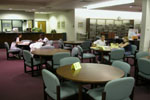Has President Obama caught MOOC fever?
 |
| “We want to encourage more colleges to embrace innovative new ways to prepare our students for a 21st century economy,” Obama said |
courses” or its handy acronym, but one could think otherwise, looking at the news articles, blog posts and tweets declaring that Obama has caught “MOOC fever.”
by Jake New, eCampusNews, August 23rd
The president’s plan calls for tying federal aid into a college ranking system that would measure the average tuition, size of student debt, and amount of innovation on campuses.
“We want to encourage more colleges to embrace innovative new ways to prepare our students for a 21st century economy and maintain a high level of quality without breaking the bank,” Obama said, before listing some existing alternatives that included competency-based learning at Southern New Hampshire University, online courses at Arizona State University, and a certain online-only master’s degree program at Georgia Tech.
Competency-based learning and Georgia Tech’s master’s program are familiar concepts to MOOC supporters and detractors, and their inclusion in Obama’s plan, which he has promised will “shake up the current system,” has inspired both praise and criticism.
Differing opinions on MOOCs is nothing new, with fans of the online courses pointing to the ability for students and colleges to save money by utilizing them, and critics pointing out MOOCs’ low retention rates.
Some faculty have expressed concern that with widespread MOOC adoption, many of them could be out of a job. Others in higher education were encouraged by the president’s enthusiasm for experimental online classes.
“It’s part of a continuum, not the only solution,” said Ray Schroeder, director of the Center for Online Learning at the University of Illinois at Springfield. “Overall, I think it’s very positive to encourage ways in which we can lower the cost of education.” Read more at eCampus News: Technology News for Today's Higher-Ed Leader: details on how MOOCs are just one part of a larger push for innovation on campuses. Related articles: MOOC's: the future of higher education, ir a passing phase?














